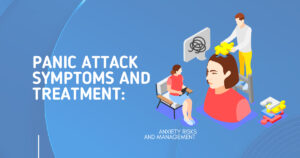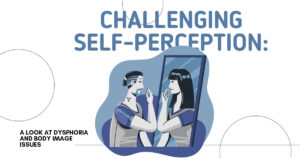In today’s fast-paced world, it’s easy to fall prey to negative thinking patterns that can hold us back from reaching our full potential. From self-doubt to catastrophic thinking, these thoughts can impact our mental well-being and hinder our ability to thrive. But there’s hope! By mastering the art of cognitive restructuring, you can challenge and change those negative thoughts, paving the way for a more positive and fulfilling life. In this comprehensive guide, we’ll explore techniques and strategies to help you overcome negative thinking patterns and cultivate a mindset of resilience and positivity.
Understanding Cognitive Restructuring
Before we explore the techniques, let’s grasp the concept of cognitive restructuring. Cognitive restructuring is a therapy method designed to recognize and question irrational or negative thoughts, replacing them with more balanced and helpful ones. It’s grounded in the belief that our thoughts shape our feelings and actions, meaning altering our thoughts can change our emotions and behaviors.
Mental Health Center of San Diego
The Power of Challenging Negative Thoughts
Negative thoughts can manifest in many forms, such as self-criticism, pessimism, or overgeneralization. They often stem from cognitive distortions, which are irrational or exaggerated ways of thinking. We can break free from their grip and regain control over our minds by challenging these distortions.
Identifying Cognitive Distortions
- All-or-Nothing Thinking: Seeing things only in extremes, without recognizing the middle ground or complexities. Overgeneralization: Making sweeping conclusions based on minimal evidence or isolated incidents. Catastrophizing: Always expecting the worst outcome, even when it’s unlikely.
- Personalization: Taking responsibility for events or outcomes that are beyond our control.
- Mind Reading: Assuming we know what others think or feel without sufficient evidence.
Techniques for Cognitive Restructuring
Now that we’ve identified common cognitive distortions let’s explore techniques for effectively challenging and reshaping negative thoughts.
Thought Record
- Step 1: Identify the Negative Thought: Start by pinpointing the negative thought causing you distress.
- Step 2: Challenge the Thought: Examine the evidence for and against the negative thought. Are there alternative explanations or interpretations?
- Step 3: Replace with a Balanced Thought: Generate a more balanced and realistic alternative to the negative thought.
Cognitive Reframing
- Reframe Negative Statements: Instead of saying, “I’m a failure,” reframe it as, “I’ve faced challenges, but I’m resilient and capable of overcoming them.”
- Focus on Solutions: Shift your focus from dwelling on problems to brainstorming potential solutions.
- Practice Gratitude: Make a habit of gratitude by reflecting on things you’re thankful for, even in challenging times.
Mental Health Center of San Diego
Behavioral Experiments
- Test Your Assumptions: Conduct behavioral experiments to test your negative thoughts. For example, initiate conversations and observe others’ responses if you believe you’re unlikable.
- Gather Evidence: Pay attention to real-life experiences that contradict your negative beliefs. Keep a journal to document these instances.
Integrating Mindfulness and Self-Compassion
In addition to cognitive restructuring techniques, mindfulness, and self-compassion can complement your efforts in challenging negative thoughts.
- Mindfulness: Try mindfulness meditation to become more aware of your thoughts and feelings without being critical. This can help you notice negative thinking patterns.
- Self-Compassion: Be gentle with yourself, especially during tough times. It’s normal to face challenges, and it’s okay to make mistakes.
FAQs about Cognitive Restructuring
How long does it take to see results from cognitive restructuring?
Results vary from person to person, but with consistent practice, many people report noticing positive changes within a few weeks to months.
Can cognitive restructuring help with anxiety and depression?
Yes, cognitive restructuring is a core component of cognitive-behavioral therapy (CBT), which is widely used to treat anxiety and depression.
Are there any risks associated with cognitive restructuring?
While cognitive restructuring is generally safe, it’s essential to approach it with guidance from a qualified mental health professional, especially if you have severe or persistent negative thoughts.
Mental Health Center of San Diego
Conclusion: Embrace the Power of Positive Thinking
“Challenge Your Negative Thoughts: Techniques for Cognitive Restructuring” is a practical guide that shows you how to change your thinking and take charge of your feelings. Using the methods described in this book and practicing mindfulness and self-kindness daily, you can escape negative thinking and lead a happier life. Changing your mindset isn’t easy, but if you stick with it and keep trying, you can overcome anything and develop a robust and positive attitude. Begin your journey to a better life today!









